POSTCARDS
from the ledge
Greg Child

POSTCARDS
from the ledge
Collected Mountaineering Writings of Greg Child


| Published by
The Mountaineers
1001 SW Klickitat Way, Suite 201
Seattle, WA 98134 |
1998 by Greg Child
All rights reserved
Ckoth edition: first printing 1998.
Paper edition: first printing 2000, second printing 2003
No part of this book may be reproduced in any form, or by any electronic, mechanical, or other means, without permission in writing from the publisher.
Published simultaneously in Great Britain by Cordee, 3a DeMontfort Street, Leicester, England, LE1 7HD
Manufactured in the United States of America
Edited by Linda Gunnarson
All photographs by Greg Child except those on (Randall Leavitt),
(Leo Dickinson).
Cover design by Helen Cherullo
Book design by Alice C. Merrill
Cover photograph of Greg Child: Michael Kennedy
Frontispiece: Woodcut Randy Rackliff
Library of Congress Cataloging-in-Publication Data
Child, Greg.
Postcards from the ledge : collected mountaineering writings of Greg Child. 1st ed.
p. cm.
Many of the writings were previously published in Climbing magazine.
Cloth: ISBN 0-89886-584-0
Paper: ISBN 0-89886-753-3
1. Mountaineering. 2. Child, Greg. 3. MountaineersBiography. I. Climbing (Aspen, Colo.) II. Title.
GV199.83.C45 1998
 Printed on recycled paper
Printed on recycled paper
To the memories of
Georges Bettembourg, Alison
Hargreaves, Steve Masceoli,
Geoff Radford, Steve Risse,
and Rob Slater

Contents
by Joe Simpson
Foreword
I once believed that you could only write a mountaineering book if you were one of the leading climbers of your time. But on further reflection it seemed clear to me that this premise was utterly illogical. Top-notch, hard-core, mainlined mountain madmen spend far too much of their time, and imagination, hanging by their sensitive bits in alarming situations to possibly have a chance of writing a halfway coherent sentence.
Unfortunately after years of being comforted by this latter theory Greg Child comes along and proves me wrong. An exceptional world-class climber who must be regarded as one of the leading Himalayan climbers of his generation, he has climbed at the highest and most demanding standards on pure sports routes, high-altitude big walls, scary mountains like Gasherbrum IV and K2, heart-stopping ice cascades in North Americaeverything it seems that he can get his hands on. Yet he still claims to be unsure as to whether he is a climber who writes or a writer who climbs. He suspects somewhat ruefully that he might have done a fair bit more climbing if he hadnt wasted so much time writing. Maybe its a good thing he has his writing. I wonder whether it hasnt kept him alive over the years, not simply because it has reduced his time spent in dangerous places but perhaps more pertinently because it has made him a climber who thinks deeply about what he is doing.
More than any other pursuit writing makes one think about life. Thinking about life enables a perspective to form about what is important and what is not, about the bigger issues, the corny life and death questions, which in reality are the coinage with which the climber gambles. There are those who so gamble unwittingly, others who do so naively and learn the hard way, yet more who place their bets in search of questionable goals employing dubious ethics, and there are the hard-core egotists who climb in vainglorious desire of image and profile and adulation.
Greg Child is none of these and he is a very good writer to boot. At once unassuming and self-deprecating, although without false modesty, he also possesses the authority of experience to speak forcefully about the sport he loves. Climbing is about good judgment, and good judgment comes from experience. Sadly, however, experience tends to come from bad judgment. An absurd Catch-22 that Greg Child seems delighted to acknowledge. He seems happy to admit to his failings and point laughingly at the absurdity of his errors, yet he refrains from praising his successes, and they are many. He has done his apprenticeship well, and it is clear that he has nothing to prove to anyone other than himself.
His writing reflects this and throughout there is always a sardonic Aussie humor, a delightful ability to puncture pomposity in others and egotism in himself; a wonderful tool for defusing harsh words and understating the incredible. He uses it well. It is a skill and an attitude much appreciated by British climbers, for whom taciturn black humor is a way of life that frequently baffles other nations.
I first heard of Greg Child when I read an elegiac piece he had written after the death of his friend Pete Thexton on Broad Peak in 1983. It was a stunningly emotive and beautiful evocation of loss and friendship, of joy and tragedy in the mountains. Any climber who has lost a friend in the hills would empathize with that poignant helplessness and the mute sense of despair experienced by Greg as he turns away from Broad Peak, down to follow the Braldu River, leaving his friend alone, buried high in a frozen eyrie. I knew many of the characters involved in that trip and when Thin Air, Gregs 1988 book, was published my neat theory about top climbers not being able to write was promptly exploded.
Mixed Emotions, a moving and sometimes hilarious collection of his mountaineering writing, further emphasized what a talented writer Child had become. This second volume of collected writings is in much the same vein, full of humor and drama and mixed with a bittersweet memory of a lifetime blessed with both adventurous fortune and a tinge of sadness.
The profiles of famous players are as incisive and intriguing as his meetings with Doug Scott and Voytek Kurtyka in Mixed Emotions. Child displays the unbiased, balanced voice of a journalist in his dispassionate but cutting analysis of Lydia Bradey and Tomo esen. Fair-minded, but not one to shirk from sharp criticism when he deems it deserved, his voice is one of authority and concern for a sport that has defined and enhanced his life.
He is refreshingly scathing about the gathering of a yearly circus on Everest. Just because it is the biggest shitpile on Earth doesnt mean it is the best shitpile on Earth, he announces, and then includes himself in his scorn when he describes assisting an amputee friend up that tit of a hill in How I (Almost) Didnt Climb Everest. In Death and Faxes he turns a perceptively withering eye on the ballyhoo surrounding Alison Hargreaves tragic death on K2 in 1995 and the consequent furor in the British media.
Never far below the surface is Childs sardonic and self-deprecating wit as The Disgusting Mountains, The Invention of the Chin Hook, the travelers nightmare recounted in Green Card, and Lost in Lhasa hilariously reveal. I think what is best about the collection is its ability to constantly surprise, intrigue, and amuse, to catch readers out and make them want to keep reading.
Next page

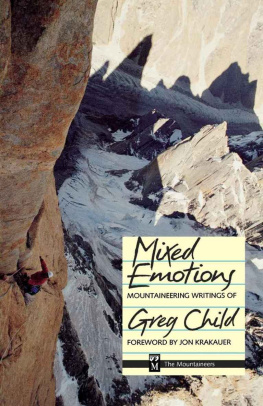
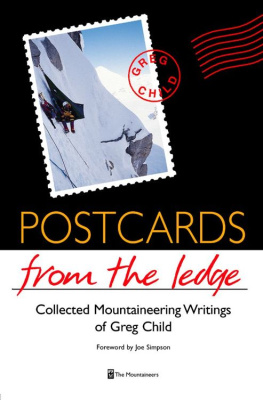
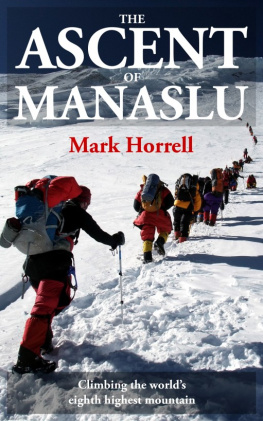
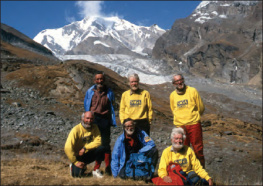
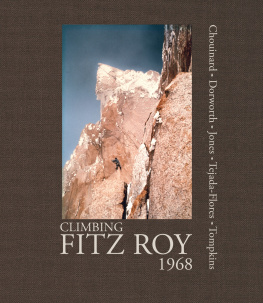
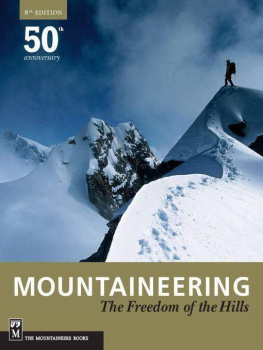



 Printed on recycled paper
Printed on recycled paper